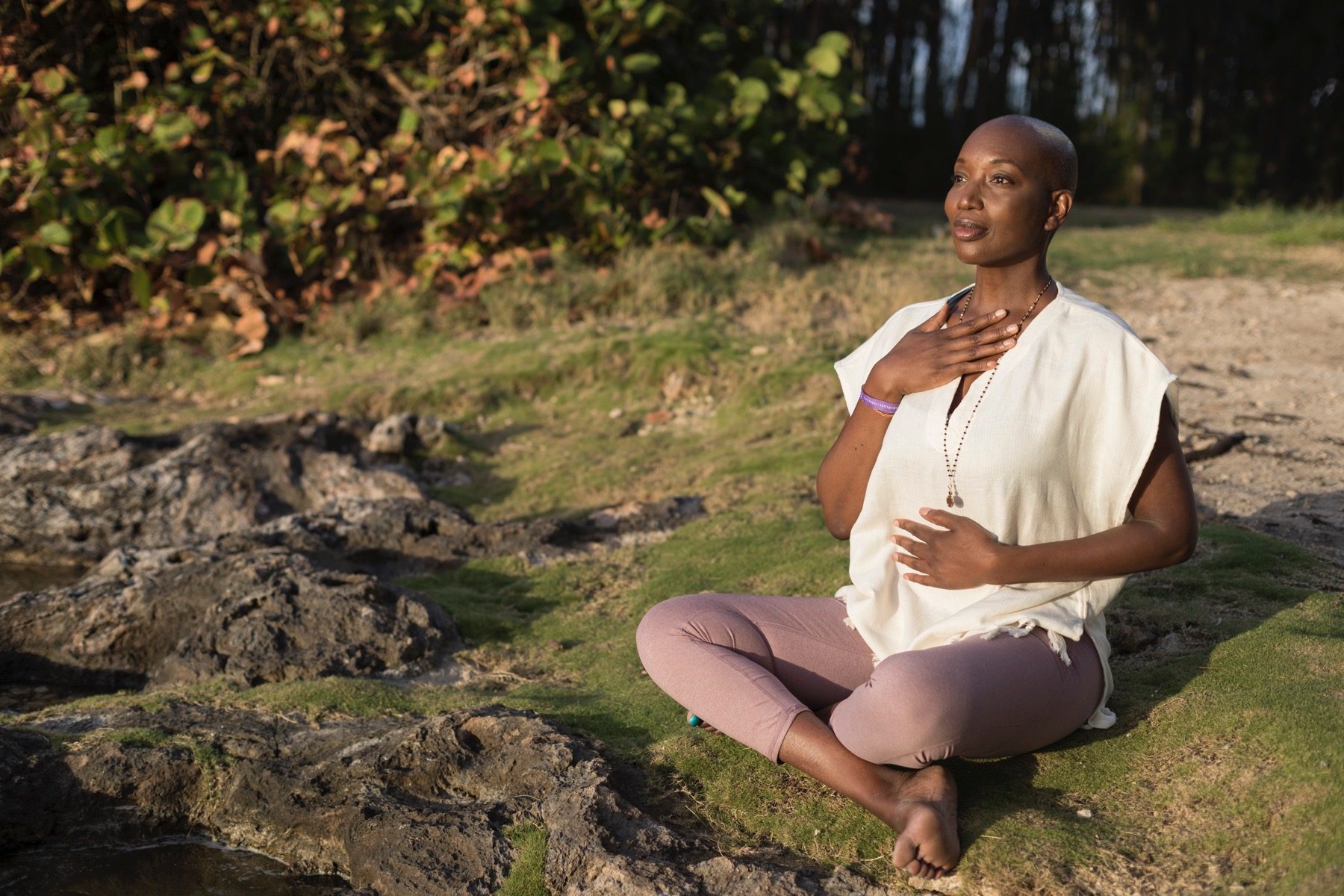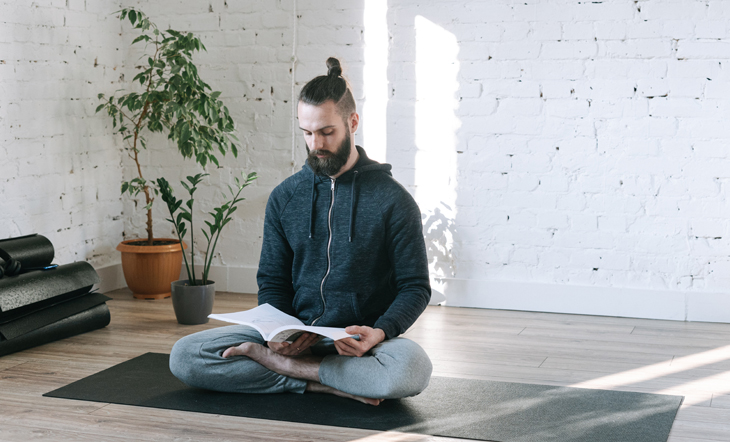Parents, Try This Calming 2-Minute Practice Next Time Your Kids Drive You Crazy
A pediatric neurologist explains what makes it so effective.


Pediatric Neurologist
Pediatric Neurologist
Dr. Jorina Elbers is a pediatric neurologist and researcher with expertise in chronic stress and trauma. She was recently an assistant professor at Stanford University and is currently the director for the Trauma Recovery Project at the HeartMath Institute, a 501(c)3 nonprofit. She is also the co-creator of the HeartMath for Parents Program.
Image by Leah Flores / Stocksy August 9, 2023 As parents, we’ve all been there: Our child does something we’ve asked them not to do—for the twentieth time. The first few times, we’re calm and collected; the way we’d like to be. But by the twentieth time, we feel the frustration move in and the upset start to rise. Everything in us wants to raise our voices and share that upset. Any helpful “tools” we might have learned to practically manage the conflict go out the window, and instead we end up losing our cool. As a pediatric neurologist, I’ve learned that being angry or upset is not just a feeling. It is actually associated with physiological changes in the body. Our heart rate goes up, our breathing gets faster, our “thinking brain” goes offline, and a cascade of neural and hormonal actions follow. Learning to self-regulate in the moment using our breath instantly shifts our physiology back to a state of calm, like a reset button. From this more regulated place, we can respond more effectively to the conflict at hand.
Advertisement
This ad is displayed using third party content and we do not control its accessibility features.
Why self-regulation can help you work through conflict with a child
Conflict is part of the natural part of relationships; however, we aren’t taught how to effectively navigate it. When we can resolve conflict through deep listening, mutual understanding, and problem-solving, conflict provides an opportunity for growth and deeper connection with others.
But resolving conflict isn’t easy because our emotional upset can get in the way of those more constructive strategies. There are many hooks that trigger old wounds, leading to anger, fear, or shame. When left unresolved, these feelings accumulate and can contribute to an overall feeling of resentment and separation.
Often, it is not the conflict itself but rather what we say or do in response to conflict that causes problems. Our ability to manage thoughts, emotions, and behaviors is referred to as “self-regulation.”
Self-regulation is an essential tool for navigating stressful situations. It prevents us from saying or doing something we might later regret. We have a specific part of the brain that usually helps with this, called the prefrontal cortex. Unfortunately, when we get triggered, our brain can go into “survival mode.” In survival mode, this rational, thinking part of the brain goes “offline,” and our more irrational, emotional brain takes over. This can cause us to lose emotional composure and subconsciously activates more undesirable “fight or flight” behaviors that can cause harm.
So, what does self-regulation look like in practice?
Here's an example: In our house, we have a well-established rule that screens are turned off at 9 p.m. So, when I recently walked into my 12-year-old’s bedroom at 9:50 p.m. to find him in the dark on his phone, my upset started to get the better of me. Clearly, the previous times I had lectured him, cut his screentime, or taken away his phone, had not made a dent in his psyche. Not to mention, he somehow figured out how to bypass the “downtime” I had so cleverly set up. I stood in the doorway, disappointed and silent.
The thing was, I didn’t want to get upset again. I don’t like feeling angry, I don’t like how upset it makes him, and I don’t like how it makes me feel afterward. I cherish the times we can talk openly, when we understand each other and when we feel connected.
So, I stopped. I put my hand over my heart. I took five slow, deep breaths, focusing on my breath as it moved in and out through my heart area. The shift in my emotional state, from upset to calm, was immediate and palpable. In that moment, I realized that I wasn’t upset at him as much as I was afraid that he was addicted to his phone.
So, instead of yelling or lecturing, I calmly walked over and sat on the edge of his bed. I was honest with him about how I was feeling, and that I cared about his well-being. What ensued was a 10-minute conversation where we talked about the insidious addiction to screens, how it affects brain development, attention, and our ability to enjoy the “less exciting” things in life. He listened, we talked (actually laughed a little), and he reached a new understanding about why we limit his screen time.
Afterwards, I asked his perspective on this new approach to his misdemeanor. He reflected appreciation for having learned more about the “why” and a desire not to deceive me again. When I asked what would have happened if I had lectured him and taken his phone away, he replied, “I probably would just make sure not to get caught next time.”
I realized that my ability to self-regulate, and not get caught up in the upset of the moment helped me identify what was really going on for me, allowed us to have a deeper connection, and probably averted dozens of similar arguments in the future.
Advertisement
This ad is displayed using third party content and we do not control its accessibility features.
A self-regulation routine to try
It’s important to remember that we can’t think our way into feeling calm when our thinking brain is offline. Instead, when we slow down our breathing, our body immediately sends messages to the emotional brain that it interprets as “calm.” In fact, the most effective way to control our nervous system is through the breath, not through our thoughts.
When we take slow, deep breaths, this automatically modifies nervous system activity1 and alters our heart rhythm pattern, sending a message of calm and safety up to the brain that brings our thinking brain back online.
The following technique is called heart-focused breathing. It is the fastest, most effective way to self-regulate during conflict, which brings your thinking brain back online and engages the qualities of the heart.
The Heart-Focused Breathing Technique:
Advertisement
This ad is displayed using third party content and we do not control its accessibility features.
The ability to self-regulate using the breath is made even more powerful when we breathe through the heart area. The heart is traditionally regarded as the center for love, compassion, and wisdom, so when we place our attention there, these qualities emerge more easily. My ability to have a more patient and caring conversation with my son that evening, rather than lecture or punish him, bore out of these qualities that were activated from the heart.
Take a moment to notice how this breath makes you feel. Do you feel a little calmer? Maybe your shoulders dropped? Maybe your stomach muscles feel more relaxed? These are all signs that your body is becoming more at ease. Notice your thoughts as well—maybe they’re less chaotic, maybe time has slowed down, or perhaps you can think more clearly. If you didn’t notice anything, that’s okay too. These things take practice, and you might have more success if you try this exercise for 2-3 minutes in a more quiet space.
Remember that practice makes progress, not perfection. You probably won’t be able to do this every time, but the more often you attempt it, the easier it will become.
The takeaway
Conflict will always be a part of life and relationships, but when we learn to navigate and resolve conflict from the head and the heart and teach our children to do the same, we are building a safer, more compassionate world for us all. As parents, we don’t need a lot of time to practice self-regulation during conflict. We just need to notice when we’re upset, and instead of reacting, take a few moments to breathe slowly and deeply through the heart. Afterward, we will have a greater capacity to meet the moment and respond from a more thoughtful, heartful place.
Advertisement
This ad is displayed using third party content and we do not control its accessibility features.

 Tekef
Tekef 































